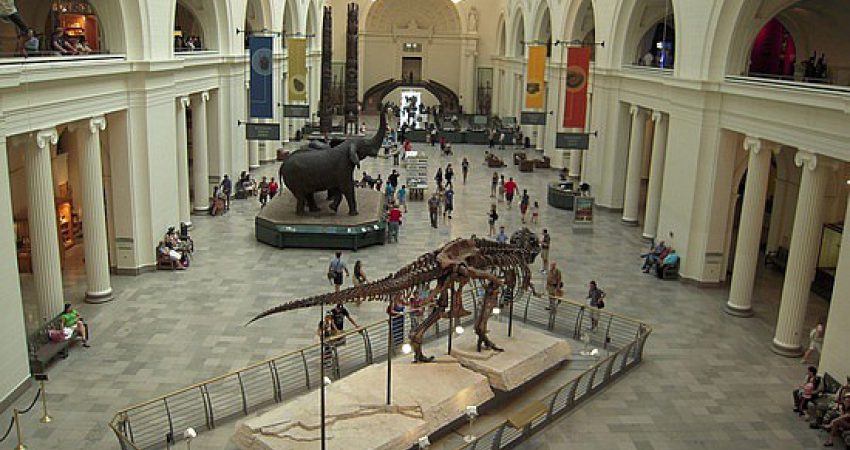
By Suzanne Perin - November 2015
PAPER CITATION
Dawson, E. (2014). “Not designed for us”: How science museums and science centers socially exclude low-income, minority ethnic groups. Science Education, 98(6), 981–1008. doi:10.1002/sce.21133
Equity and social inclusion are important goals for museums. This paper describes how science museums in London reinforced social disadvantages for some visitors who fell outside museums’ “imagined” or “ideal” visitor type. Long aware that people from working-class, low-income, and ethnic minority backgrounds do not visit, informal science education (ISE) institutions often attribute lack of visitorship to cost or barriers to access. Dawson argues that such institutions are not inclusive due to social factors that reinforce the experience of difference, discomfort, and inaccessibility for minority groups.
Research Design
The author investigated why people from underprivileged backgrounds do not visit ISE institutions and what happens when they do. She concludes that barriers to access, such as cost or geography, are not a complete explanation for why some people do not visit. Social positions determined by such factors as gender, ethnicity, class, or age play a significant and underexamined role.
Taking an ethnographic approach, the study worked with participants for over a year, exploring their expectations, perceptions, and experiences of museums and science centers. Participants were recruited from four community groups in central London: a Sierra Leonean group (N = 21), a Latin American group (N = 18), a Somali group (N = 6), and an Asian group (N = 13). Analysis drew on qualitative data from four focus groups, 32 interviews, four accompanied visits to science museums, and field notes.
Research Findings
Reasons the participants gave for not visiting science museums included cost, location, lack of information, and a sense of alienation. For some, visiting ISE institutions was inconceivable because of a social distance between the museum and their community. A woman from the Sierra Leonean group said, “[T]here’s not going to be anyone like me there,” so visiting would be “wrong” (p. 9). Dawson reports that the study participants felt museums were not places they would ever think to visit because they believed the museum’s content, values, and expected behaviors were irrelevant to them. Then, when participants visited as part of the study, their feelings that these places were not for them were confirmed. One issue was language.
Although some participants spoke up to six languages, the written and audio English texts were often inaccessible to them, requiring science concepts and language they might not have encountered previously.
The groups experienced a general sense of unwelcome in navigating the spaces and interacting with staff. Discovering a display that included a bird native to their region, one group danced and sang in the quiet gallery, reacting to the exhibit on their own terms. However, some later regretted their dancing; their behavior had further marked them as “other.” During another group’s visit, security staff repeatedly admonished participants not to touch, although they were not attempting to touch items.
Though adult study participants saw the museum as a place for children, they could not themselves use the museum very well or help their children. They had difficulty navigating museum spaces and did not have prior knowledge of the scientific concepts applied in the exhibits. Dawson mildly notes that some participants found this experience “off-putting.”
Another, perhaps more expected, barrier is time. Leisure time was rare for the working-class migrant families in this study. Multiple jobs, childcare, and household demands limited their recreational opportunities, especially during the hours most museums are open. Because of this time limitation, museums did not fall in the range of their recreation priorities.
Theoretical Basis
Bourdieu’s theoretical concepts of habitus, social capital, and symbolic violence contribute to Dawson’s understanding of the social structures of ISE institutions.
Habitus conceptualizes human behavior as being shaped by experience. People know without thinking what behavior is appropriate and what they should pay attention to or ignore. Patterns of habitus develop through shared experiences in social groups, often defined by race, gender, and class.
To manage the situations in which they find themselves, people draw on social, economic, and cultural capital: resources of knowledge, skills, social connections, or money. The kinds of capital available to people is determined by their habitus.
Dawson also uses Bourdieu’s concept of symbolic violence: unconscious actions and modes of thought that coerce or subjugate. The ways in which symbolic violence reproduces inequality, exclusion, or inherited advantage often go unrecognized.
Implications for Practice
This study implies that, rather than focusing on logistical barriers to full inclusion, ISE institutions must examine their cultural practices. Dawson suggests examining assumptions about visitors and considering how to support cross-cultural learning opportunities. Specific suggestions include providing support in multiple languages and training facilitators and front-line staff to support cross-cultural learning for a diverse range of visitors.
References
Bourdieu, P. (1977). Outline of a theory of practice (R. Nice, Trans) Cambridge, England:Cambridge University Press.
Bourdieu, P. (1998). Practical reason. Cambridge, England: Polity Press.




